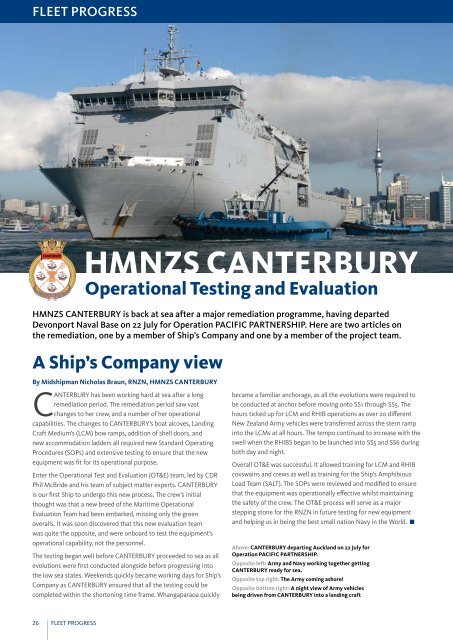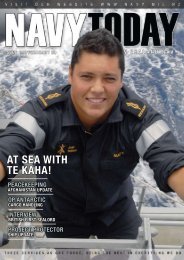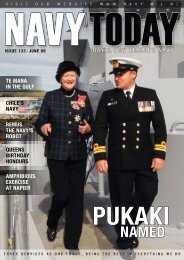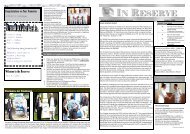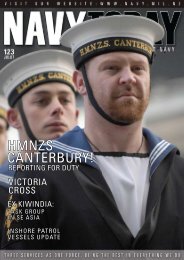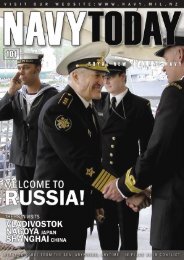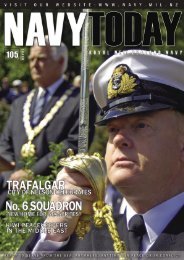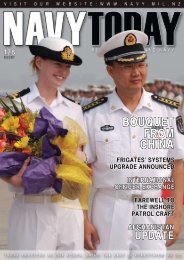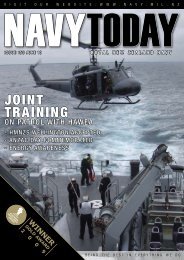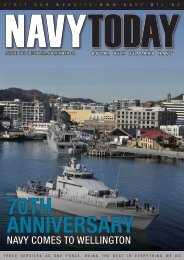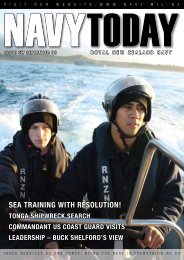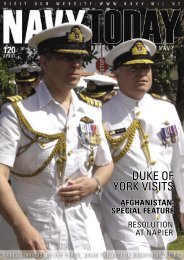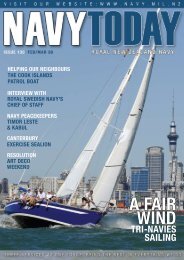Aug-Sep 2013, Issue 174 - Royal New Zealand Navy
Aug-Sep 2013, Issue 174 - Royal New Zealand Navy
Aug-Sep 2013, Issue 174 - Royal New Zealand Navy
You also want an ePaper? Increase the reach of your titles
YUMPU automatically turns print PDFs into web optimized ePapers that Google loves.
fleet progressHMNZS CANTERBURYOperational Testing and EvaluationHMNZS CANTERBURY is back at sea after a major remediation programme, having departedDevonport Naval Base on 22 July for Operation PACIFIC PARTNERSHIP. Here are two articles onthe remediation, one by a member of Ship’s Company and one by a member of the project team.A Ship’s Company viewBy Midshipman Nicholas Braun, RNZN, HMNZS CANTERBURYCANTERBURY has been working hard at sea after a longremediation period. The remediation period saw vastchanges to her crew, and a number of her operationalcapabilities. The changes to CANTERBURY’s boat alcoves, LandingCraft Medium’s (LCM) bow ramps, addition of shell doors, andnew accommodation ladders all required new Standard OperatingProcedures (SOPs) and extensive testing to ensure that the newequipment was fit for its operational purpose.Enter the Operational Test and Evaluation (OT&E) team, led by CDRPhil McBride and his team of subject matter experts. CANTERBURYis our first Ship to undergo this new process. The crew’s initialthought was that a new breed of the Maritime OperationalEvaluation Team had been embarked, missing only the greenoveralls. It was soon discovered that this new evaluation teamwas quite the opposite, and were onboard to test the equipment’soperational capability, not the personnel.The testing began well before CANTERBURY proceeded to sea as allevolutions were first conducted alongside before progressing intothe low sea states. Weekends quickly became working days for Ship’sCompany as CANTERBURY ensured that all the testing could becompleted within the shortening time frame. Whangaparaoa quicklybecame a familiar anchorage, as all the evolutions were required tobe conducted at anchor before moving onto SS1 through SS5. Thehours ticked up for LCM and RHIB operations as over 20 different<strong>New</strong> <strong>Zealand</strong> Army vehicles were transferred across the stern rampinto the LCMs at all hours. The tempo continued to increase with theswell when the RHIBS began to be launched into SS5 and SS6 duringboth day and night.Overall OT&E was successful. It allowed training for LCM and RHIBcoxswains and crews as well as training for the Ship’s AmphibiousLoad Team (SALT). The SOPs were reviewed and modified to ensurethat the equipment was operationally effective whilst maintainingthe safety of the crew. The OT&E process will serve as a majorstepping stone for the RNZN in future testing for new equipmentand helping us in being the best small nation <strong>Navy</strong> in the World.Above: CANTERBURY departing Auckland on 22 July forOperation PACIFIC PARTNERSHIP.Opposite left: Army and <strong>Navy</strong> working together gettingCANTERBURY ready for sea.Opposite top right: The Army coming ashore!Opposite bottom right: A night view of Army vehiclesbeing driven from CANTERBURY into a landing craft26 fleet progress


